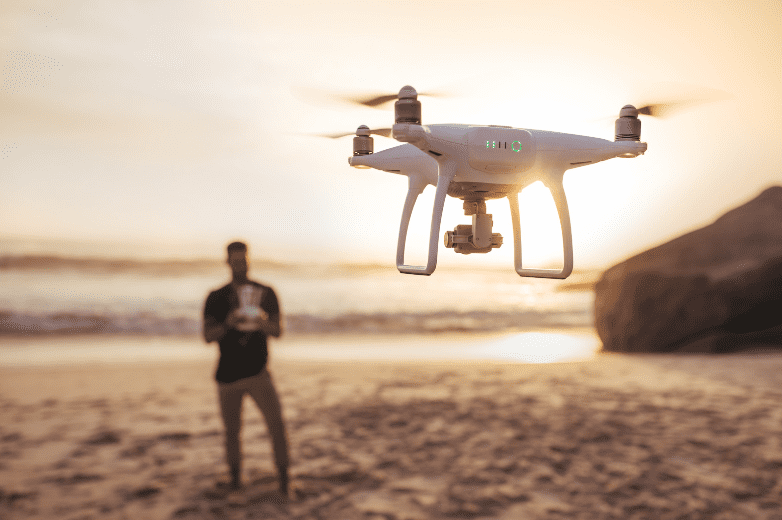How you can Capture Stunning Aerial Videos

Aerial videography transforms ordinary scenes into visually stunning and dynamic perspectives. Whether you’re a hobbyist or a professional videographer, achieving high-quality aerial footage involves understanding your equipment, optimizing your shooting techniques, and ensuring the right setup for your drone. Here’s how you can enhance your aerial survey drone videography shots:
Choose the Right Drone
Selecting the right drone is crucial for capturing high-quality aerial videos. Not all drones are created equal, and the features you choose directly affect the quality of your footage.
Key Features to Consider:
- Camera Quality: The sensor size, lens quality, and bit rate are the most critical factors when choosing a drone for aerial photography. While resolution matters, the difference between 2K, 4K, and 5K is less significant than having a good sensor and lens. For mapping projects, JPEG images are required instead of RAW, as RAW formats, though detailed, are unsuitable for mapping workflows.
- Drone Types: There are two primary types of drones: FPV (First-Person View) drones, which lack a gimbal or stabilization and are used for fast, immersive flying; and traditional drones like the DJI Mavic or Phantom series, which come equipped with 3-axis gimbals for stable, smooth footage.
Plan Your Shots
Scheduling is critical when shooting aerial videos. It is good to spend some time before you even fly, just plan around the area and conceptualize what you want to capture. Elements such as lighting, whether it be natural or artificial, weather conditions as well as the subject of the picture.
Tips for Planning:
- Magic hour is 1 hour before sunrise or after sunset. It’s great for low light or hyper lapses.
- Golden Hour: is the hour after the sun rises or the hour before sunset. Filled with soft warm light, and shadows make it for a better image.
- Shot List: Make a shot list to ensure you capture all the required shots including different viewing angles, lenses, and movements. Ensure you take different shots which are the wide, close shots and the interesting angles to improve on the videos.
Master the Basics of Flight
Drones come with advanced autopilot and sensors, but crashes often result from user errors. For beginners, using Cine mode, or slow mode, is recommended. This setting limits your drone’s speed to around 2 mph, making it easier to control and reducing crash risk. By flying slowly, you’ll gain better control and improve your skills, ensuring a safer and more enjoyable experience.
Basic Flight Skills to Practice:
- Smooth Movements: Go Slow! Do not use footage where you change movements in controls. you will see jerky motions in your clips. You can also adjust your expo ratings in your drone controls for significantly smoother operation. If those two suggestions aren’t cutting it use a warp stabilizer or reel steady software. If that doesn’t work then you need to practice flying.
Use Intelligent Flight Modes
Popular Intelligent Flight Modes:
- Follow Me: The drone is free to navigate and focus on a subject of interest, keeping it framed within the shot. This is particularly useful if one wants to capture images, particularly during a sporting activity.
- Orbit: The drone follows around the main subject to give a panoramic view with a swooping shot.
- Waypoint Navigation: When in operation, set a sequence of GPS points, and the drone will then follow the set track and provide set and precise visuals.
Experiment with Angles and Perspectives
A drone is a camera you can put anywhere if you are good enough. It can replace Jibs, Cranes, Sliders, and expensive car mounts and stabilizers.
Creative Angle Ideas:
- Get closer or use Zoom: Focus on your subject by filling the frame with something captivating. This technique adds impact and draws attention to the most important details in your shot, making the composition more engaging and visually striking.
- Walk-Under Shot: Fly the drone directly above someone walking, maintaining a close distance for a cinematic, immersive experience as they move through a scene.
- Coming Into Shot: This is when a subject enters the frame from the side, front, or background. It allows for a smooth introduction of a character or object into the scene, often building anticipation or focus on the subject’s movement.
- The Tracking Shot: A tracking shot follows the subject, either by moving alongside or behind them. This technique adds motion and continuity, allowing the audience to stay connected with the subject as they move through a scene.
Focus on Composition
Content can have just as much impact as composition; Some techniques that are used in photographic composition are also relevant to aerial videography including the rule of thirds, leading lines, and frame. Depth of field is difficult to get in drone shots because of the lens. They are meant to keep everything in focus. You need to learn the composition rules so that you can know when you are breaking them, then you just call it creative.
Composition Tips:
- Rule of Thirds: Position the main subject off-center to have a more interesting composition of the picture. You should be able to turn on gridlines to help with this.
- Leading Lines: Try to use the lines existing in nature such as road, river, or something else to lead the viewer’s attention- to the subject
- Foreground Elements: Elements within the foreground should be integrated to give shots a sense of depth and perspective. It is difficult to get the depth of field out of drone lenses with little variance in f stop.
Conclusion
Aerial survey drone video has more to do with skill/ experience than anything else; it is an art form that requires extra attention to detail. Just bear in mind that in any endeavor, it is practice, patience, and constant learning that can unlock success.







